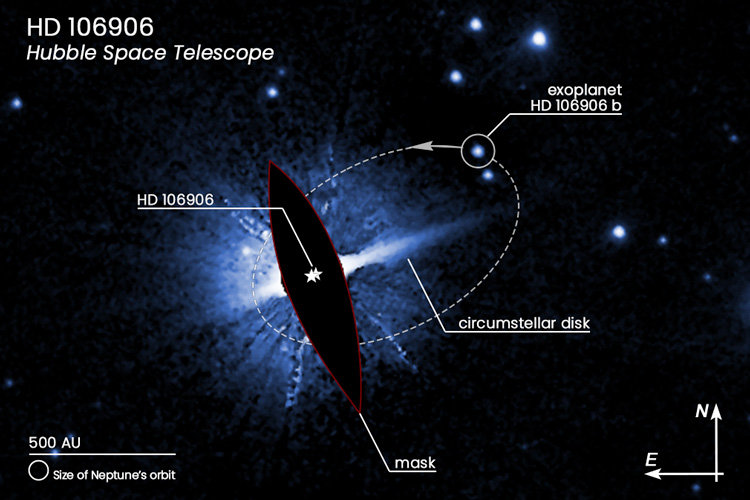
Astronomers confirm bound orbit for planet far from its star, showing that far-flung planets exist...
Read More

Astronomers confirm bound orbit for planet far from its star, showing that far-flung planets exist...
Read More
Two binary star systems narrowly missed one another, but left behind a smoking gun. Paul Kalas of UC Berkeley was puzzled by the tilted but stable orbit of a planet around a binary star – an orbit like that of our solar system’s proposed Planet Nine. He calculated backwards in time to see if any of the 461 nearby stars ever came close enough to perturb the system. One star fit the bill. The stellar flyby 2-3 million years ago likely stabilized the planet’s orbit, keeping it from flying away.
Some of the peculiar aspects of our solar system – an env...
Read More
These are two direct images of the cometary dust and exoplanet surrounding the young star HD 106906. The wider field in blue shows Hubble Space Telescope data where the star’s blinding light is artificially eclipsed (gray circular mask). The point to the upper right is an 11 Jupiter mass planet located over 650 times the Earth-Sun distance. A new discovery in these Hubble observations is an extremely asymmetric nebulosity indicating a dynamically disturbed system of comets. Surprisingly, the planet is located 21 degrees above the plane of the nebulosity. The circular orange inset shows a region much closer to the star that can only be detected using advanced adaptive optics from the ground-based Gemini Observatory...
Recent Comments